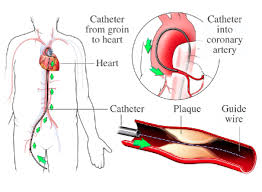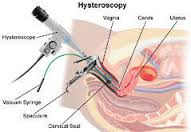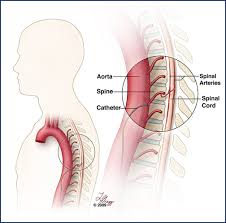 Angiography-Overview
Angiography-Overview
Coronary angiography test is a medical imaging technique here an X-ray image is taken to visualize the inside of the blood vessels and the organs of the body. Egas Moniz, a Portuguese physician, neurologist and a Nobel Prize laureate have developed a technique of contrasted X-ray cerebral angiography for diagnosing the nervous disease such as arteriovenous malformations and tumors. He is recognized as the pioneers in this field and the procedure have become considerably safe with the introduction of the sharp devices that required to remain inside the vascular lumen.
Angiography-Cause
It is an X-ray examination of the veins, arteries and the heart chambers that looks at the blood flow. Angiography is used to identify the sites of the narrowing or the blockages in the arteries, which can also reveal the presence of any blood clots, calcium deposits or bulging or weakening of the artery walls, also known as aneurysms. Often an angiogram is required to decide what treatment will be required for the heart failure.
Angiography-Symptoms
The angiography is used to locate the site of the internal bleeding, investigating the injuries to the organs, detecting the blood clots and planning the surgery which involves the blood vessels.
Angiography-Treatment Overview
 During the test, the patient will lie on the couch in a catherization room and an X-ray machine is mounted above the couch. A catheter is inserted through a wide needle or a small cut in the skin into the blood vessel in the arm or groin region under local anaesthesia. The doctor will then gently push the catheter up the blood vessel towards the heart. Often the low dose X-rays are used for monitoring the progress of the catheter top which is manipulated into the correct position and you may be able to see this on the X-ray monitor.
During the test, the patient will lie on the couch in a catherization room and an X-ray machine is mounted above the couch. A catheter is inserted through a wide needle or a small cut in the skin into the blood vessel in the arm or groin region under local anaesthesia. The doctor will then gently push the catheter up the blood vessel towards the heart. Often the low dose X-rays are used for monitoring the progress of the catheter top which is manipulated into the correct position and you may be able to see this on the X-ray monitor.
The tip of the catheter is then pushed just inside the main coronary artery. Some dye is then injected down the catheter into the artery, then several X-ray films are rapidly taken and recovered as a moving picture and this is called an angiogram.
Angiography-Surgery
The angiogram shows the vessels filling with the blood and the sites of narrowing. The test is repeated for the other main coronary artery and the picture is built-up for each of the coronary arteries and their branches. You cannot feel the catheter inside the blood vessels, but may feel an extra heartbeat during this procedure. Your heartbeat will be monitored by the electrodes that are placed on the chest to provide a tracing on an ECG machine.
After completion of the test, the catheter will be gently pulled out and you will need a few stitches at the site where a small cut was made on the skin. If the wide needle was inserted into the groin, then the nurse will press over the site for about ten minutes in order to prevent bleeding. Your doctor will give instructions before undergoing the angiography tests. This a ngiography will take about 30 minutes and in most cases, it will be performed as a day care procedure. Your doctor will discuss what he or she will found during the test and give the details of the test results after the angiography is performed.
ngiography will take about 30 minutes and in most cases, it will be performed as a day care procedure. Your doctor will discuss what he or she will found during the test and give the details of the test results after the angiography is performed.
Angiography-Related Information
You can get a low cost angiography test at IndiaCardiacSurgerySite that has association with the finest cardiologists and the top hospitals in India. We assist the patients with arrangements with their medical journey to India, medical visas, accommodation and food. We offer the highest quality medical treatments and services that adhere to the international standards in the medical field, thereby make sure that our patients reach back to their home safe and contented.
For More Link :-
Why choose India for Angiography?
Angiography Test Cost in India: How Safe and effective is this Surgery?
Why Pakistan, India and South Korea patients looking for Angiography in India?
